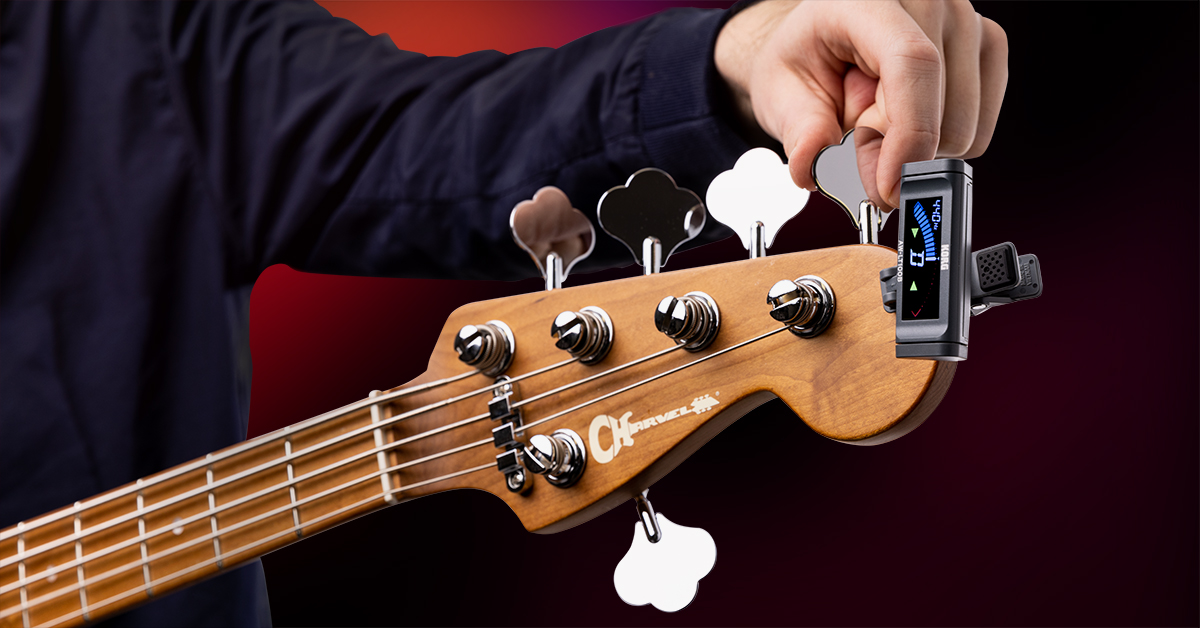A bass guitar can be tuned as low as a player’s strings and hardware allow, often down to C1 or lower. Standard tuning is E1, but alternative tunings offer creative flexibility.
Exploring the depths of sound, bass guitarists often experiment with tunings to suit varied musical genres. The typical four-string bass guitar resonates at E1, A1, D2, and G2 in standard tuning. Yet, musicians seeking a heavier or more profound timbre frequently detune their basses.
This practice, known as ‘down-tuning’, adjusts each string to a lower pitch. The limits depend on string thickness, tension sustainability, and the instrument’s construction. Metal genres, for example, might tune down to C1 or even B0, pushing the boundaries of traditional bass roles. Custom strings and reinforced necks enable these low frequencies, providing players with a broad sonic palette. Tuning down enhances harmonic possibilities, creating a richer foundation for compositions while emphasizing the bass’s rhythmic and melodic potential.

Credit: m.youtube.com
Introduction To Bass Tuning
The realm of bass guitar tuning is an adventure in sound, begging the question: just how low can you go? For bassists driven by the pursuit of depth, tuning beyond the standard EADG is a siren call. This introductory voyage into bass tuning will uncover the mechanics of tuning, the impact of string gauge, and the thrilling frontiers of low frequencies that challenge conventional expectations.
Understanding Standard Bass Tuning
Before venturing into the depths, one must first grasp the foundation of bass tuning. Standard tuning for a four-string bass guitar is EADG, going from the lowest pitched string to the highest. Each string is a perfect fourth apart, creating a balance between range and playability. This setup offers a versatile palette for different music genres, making it the go-to for many players.
This setup is not arbitrary but thoughtfully crafted to synchronize with other instruments in a band setting, harmonizing roles, and providing a solid backbone for any ensemble.
The Role Of String Gauge In Tuning Stability
- Thicker strings – lend themselves to lower tunings, reducing floppiness and maintaining firmness.
- Thinner strings – better suited for standard or higher tunings, responding with greater ease to the player’s touch.
A bass player must consider string gauge carefully; it’s a critical element when chasing those lower tones. The gauge, which refers to the string’s thickness, significantly affects the instrument’s tension, feel, and sound. The heavier the strings, the tighter the tension they can maintain when tuned lower, thus preserving the clarity and stability of each note.
Exploring The Limits Of Lower Tuning
Diving deeper into tuning, one may choose to delve into tunings such as drop D, C standard, or even lower. These experiments come with their own set of challenges and require adjustments in playing technique as well as instrument setup.
| Tuning | Description |
|---|---|
| Drop D | Tuning the lowest string a whole step down provides heavier riffs with ease of playability. |
| C Standard | All strings are tuned down a major third, offering a rich, darker sound that resonates with metal genres. |
The captivating unknown of lower tuning beckons, unlocking new sonic territories. With proper adjustments, including truss rod tweaks and bridge alignment, your bass can stably maintain these lower tunings. Exploration is key, but so is understanding the mechanical and physical boundaries of your instrument.

Credit: www.sweetwater.com
Factors Influencing Bass Tuning Range
As the foundational backbone of any groove, the bass guitar holds a unique responsibility in the frequency spectrum of music. The tuning of a bass guitar not only affects its playability and tonal characteristics but also dictates how deep the instrument can plunge into those guttural, chest-thumping lows. Diverse factors contribute to the frequency range a bass can achieve, from physical attributes like scale length and string construction to the fine-tuning of hardware and personal flair in playing technique.
Scale Length’s Impact On Tuning
Scale length, which is the distance between the nut and the bridge on a bass, plays a pivotal role in determining how low you can go. Longer scale lengths provide more tension at lower tunings, helping to maintain clarity and definition. Bass guitars typically come in standard scales such as 34 inches for most 4-strings, going up to 35 or 36 inches for extended range basses. A longer scale length often enables lower tuning without the loss of string tension or intonation.
Material And Construction Of Bass Strings
The choice of strings significantly influences the tuning limits. Heavy-gauge strings can handle lower tunings better by maintaining adequate tension, while materials used—in conjunction with winding methods—contribute to both the feel and the tonal quality of the strings. For example, stainless steel strings provide a bright tone and are resistant to corrosion, whereas nickel-plated strings offer a warmer tone and a smoother playing surface.
Tuning Stability: Hardware And Setup Considerations
To ensure your bass guitar stays in its tuned state, hardware setup and quality cannot be overlooked. Quality tuning machines offer greater stability and precision, holding the strings in the desired tuning for extended periods. The bridge also plays a role; a poorly setup bridge will lead to inconsistencies in string height and tension. Proper adjustment of the truss rod is critical too, as it counters the neck tension and keeps the bass playing comfortably regardless of the tuning.
The Influence Of Playing Style And Technique
Playing style and the utilized techniques shape the overall sound as much as the bass guitar’s setup. Aggressive playing might require sturdier strings and a setup that promotes tuning stability to withstand the additional force. Conversely, players with a lighter touch might tune lower without any significant changes. Slap, tap, fingerstyle, or pick—all these methods can be affected by how the bass is tuned, shaping the instrument’s responsiveness and the music’s character.
Low Tuning In Practice
Exploring the depths of sound, bass guitars offer a rich palette for innovation in tuning. Musicians seeking a heavier, more resonant tone often delve into low tunings to achieve a distinct vibe. This part of the sonic spectrum allows for a unique bass presence that can redefine a genre or create a new sound entirely.
Genres That Often Use Low TuningGenres That Often Use Low Tuning
Low tuning is not confined to a single musical style; it blankets an array of genres, each harnessing its potential in exciting ways. This technique is particularly prevalent in:
- Metal: From doom to djent, metal bassists rely on low tunings for a profoundly heavy sound.
- Progressive Rock: Artists often tune down for added richness to complex arrangements.
- Jazz Fusion: Some players opt for lower pitches to complement extended harmony.
- Experimental: Bands seeking a distinctive tone space frequently experiment with tunings.
Examples Of Bass Guitars Tuned Beyond Standard
Pushing the envelope, several instruments are synonymous with low tunings. The Fender Jazz Bass, Music Man StingRay, and Ibanez SR series are a few examples. These basses, equipped with robust hardware and electronics, often drop below the standard E-A-D-G, hitting notes like C-standard or even lower tunings such as A-standard on a five-string bass.
Balancing Tone and Playability in Low TuningsBalancing Tone And Playability In Low Tunings
Maintaining a balance between a powerful tone and instrument playability is crucial. Thicker strings may be required to keep tension while preventing fret buzz or a muddy tone. Adjustments to the bass setup, including neck relief, action, and intonation, are essential to ensure smooth playability without compromising the sound.
Customizing Your Bass for Optimal Low Tuning PerformanceCustomizing Your Bass For Optimal Low Tuning Performance
To achieve superior performance at lower tunings, a customized approach is often necessary:
- String Choice: Select heavier gauge strings for optimal tension and clarity.
- Nut Modification: Widen nut slots accordingly to accommodate larger string diameters.
- Truss Rod Adjustment: Counteract the increased string tension with truss rod tweaks.
- Pickup Selection: Opt for pickups that can handle lower frequencies without loss of definition.
- Bridge Stability: Ensure the bridge can withstand the tension and maintain accurate intonation.

Credit: www.schoolofrock.com
Technical Adjustments For Lower Tuning
As musicians explore the sonic depths of music, tuning a bass guitar below standard EADG becomes an adventure that requires technical finesse. Going lower on a bass guitar is not just about turning the tuning pegs; it demands meticulous adjustments and sometimes equipment modifications to ensure that the instrument retains playability and tonal clarity. Let’s dive into the technical tweaks necessary to plunge your bass into the realms of subterranean frequencies.
Setting Up Your Bass For Lower Tunings
Preparing your bass for lower tunings starts with a dedicated setup. This goes beyond the basic tuning process and involves several critical steps:
- String Gauge: Choose heavier strings to maintain tension at lower pitches.
- Truss Rod Adjustment: Thicker strings exert more tension on the neck, requiring a truss rod tweak to achieve optimal neck relief.
- Action Adjustment: Raising the action can prevent fret buzz that commonly occurs with lower tunings.
- Bridge Saddle Adjustment: Each saddle may need to be adjusted for height and intonation to accommodate the new string gauge and tuning.
- Nut Slot Width: The nut slots should be widened to fit thicker strings without pinching.
Troubleshooting Common Issues With Low Tuning
Lower tuning can introduce some common issues, but proactive troubleshooting can help you overcome them:
- Fret Buzz: If lowering the action doesn’t solve this, check for uneven frets or consider a fret leveling job.
- Poor Intonation: This can often be corrected by fine-tuning the saddle positions on the bridge.
- Lack of Sustain: Heavier strings and proper setup should improve sustain in lower tunings.
Modifications And Equipment For Extreme Low Tuning
Extreme low tuning may require specific modifications:
- Extended Scale Basses: Longer necks provide better tension and intonation at very low tunings.
- Specialized Pickups: Pickups designed for low frequencies capture the full richness of the notes.
- High-Quality Tuners: Precision tuners help maintain stability in extreme tunings.
Maintaining Intonation And Tension
Intonation and tension are pivotal for a bass that’s tuned low:
- Regular Checks: Monitor and adjust intonation as part of routine instrument maintenance, especially with frequent tuning changes.
- Proper String Winding: Ensure strings are wound correctly on the pegs to prevent slippage.
- Neck Stability: Regular truss rod adjustments maintain the necessary tension and prevent warping.
Is There a Limit to How Low a Bass Guitar Can Be Tuned?
Is there a limit to how low a bass guitar can be tuned? The answer lies in exploring bass guitar low frequencies, which can transform its sound and impact. While standard tuning goes deep, some musicians delve into sub-octaves, pushing boundaries. However, tonal clarity and instrument integrity remain crucial considerations.
Frequently Asked Questions For How Low Can A Bass Guitar Be Tuned
What Is The Lowest A Bass Can Go?
The lowest note a standard bass guitar can hit is E1. On a 5-string bass, this extends down to B0.
How Low Does Bass Guitar Go?
A standard bass guitar reaches a low of E1 (41. 2 Hz), with four strings tuned E-A-D-G. Five-string basses go lower to B0 (30. 87 Hz), and six-string basses can hit an even lower A0 (27. 5 Hz).
What Is The Lowest Note On A Bass Guitar?
The lowest note typically on a standard four-string bass guitar is E1, one octave below E2 on a regular guitar. Some five-string basses go lower to B0.
Can You Down Tune A Bass Guitar?
Yes, you can down-tune a bass guitar to reach lower notes. Adjust the tuning pegs to loosen the strings to the desired pitch.
Conclusion
Exploring the depths of a bass guitar’s tuning reveals vast sonic landscapes. From the standard EADG to the earth-shaking tones of C-standard and below, players wield control over their sound. Remember, suitable strings and setup ensure clarity and sustain. Embrace experimentation and shape your unique auditory signature with each note.
